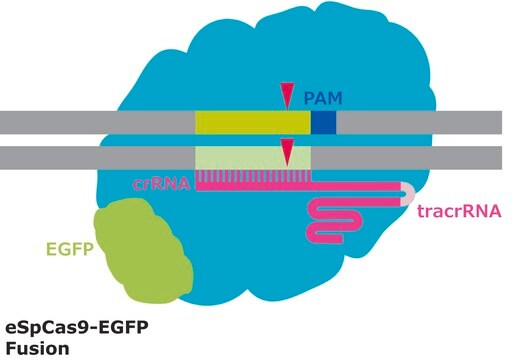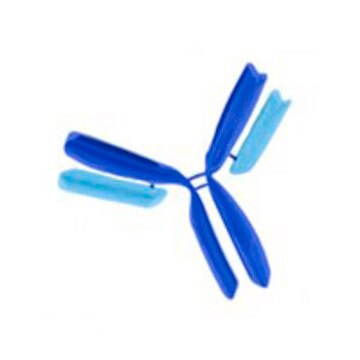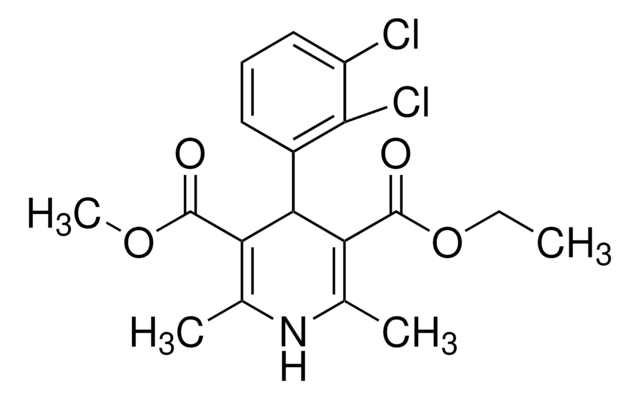P6487
Anti-Purinergic Receptor P2Y1 antibody produced in rabbit
affinity isolated antibody, lyophilized powder
Iniciar sesiónpara Ver la Fijación de precios por contrato y de la organización
About This Item
Código UNSPSC:
12352203
NACRES:
NA.41
Productos recomendados
origen biológico
rabbit
Nivel de calidad
conjugado
unconjugated
forma del anticuerpo
affinity isolated antibody
tipo de anticuerpo
primary antibodies
clon
polyclonal
Formulario
lyophilized powder
reactividad de especies
human, rat
técnicas
immunohistochemistry: suitable
western blot: suitable
Nº de acceso UniProt
temp. de almacenamiento
−20°C
modificación del objetivo postraduccional
unmodified
Información sobre el gen
human ... P2RY1(5028)
rat ... P2ry1(25265)
Categorías relacionadas
Descripción general
Purinergic Receptor P2Y1 is a member of G protein-coupled receptors. The P2Y1 gene is mapped to human chromosome 3q25.2. It is present in the heart, blood vessels, prostate, testis, ovary, and neural tissue.
Inmunógeno
synthetic peptide corresponding to residues 242-258 of rat or human P2Y1.
Aplicación
Anti-Purinergic Receptor P2Y1 antibody produced in rabbit has been used in western blotting1:200 and immunohistochemistry at a dilution of 1:50.
Acciones bioquímicas o fisiológicas
Purinergic Receptor P2Y1 acts as a receptor for extracellular ATP and ADP. It is essential for ADP-induced platelet activation, aggregation, and thrombosis. P2Y1 also participates in endothelial cell-based nucleotide-induced relaxation and in calcium mobilization. It serves as a potential target for the generation of new antiplatelet compounds and anti-inflammatory strategies.
Forma física
Lyophilized from phosphate buffered saline, pH 7.4, 1% bovine serum albumin and 0.05% sodium azide.
Cláusula de descargo de responsabilidad
Unless otherwise stated in our catalog or other company documentation accompanying the product(s), our products are intended for research use only and are not to be used for any other purpose, which includes but is not limited to, unauthorized commercial uses, in vitro diagnostic uses, ex vivo or in vivo therapeutic uses or any type of consumption or application to humans or animals.
¿No encuentra el producto adecuado?
Pruebe nuestro Herramienta de selección de productos.
Elija entre una de las versiones más recientes:
¿Ya tiene este producto?
Encuentre la documentación para los productos que ha comprado recientemente en la Biblioteca de documentos.
Autocrine activation of P2Y1 receptors couples Ca (2+) influx to Ca (2+) release in human pancreatic beta cells.
Khan S, Yan-Do R, Duong E, et al.
Diabetologia, 57(12), 2535-2545 (2014)
[Fatigue fracture of bone (author's transl)].
J Sebek et al.
Acta chirurgiae orthopaedicae et traumatologiae Cechoslovaca, 43(4), 364-366 (1976-08-01)
Shara Khan et al.
Diabetologia, 57(12), 2535-2545 (2014-09-12)
There is evidence that ATP acts as an autocrine signal in beta cells but the receptors and pathways involved are incompletely understood. Here we investigate the receptor subtype(s) and mechanism(s) mediating the effects of ATP on human beta cells. We
F R Seiler et al.
Developments in biological standardization, 44, 153-163 (1979-01-01)
Unspecifically induced activation of Complement (C) in solution can be caused either by denatured Ig molecules and by polymeric aggregates of same or more specifically by antigen-antibody complexes. As a quality criteria, e.g. for i.v.-IgG preparations, it is agreed by
Milka Koupenova et al.
Frontiers in pharmacology, 9, 37-37 (2018-02-15)
Platelets are small anucleated cells present only in mammals. Platelets mediate intravascular hemostatic balance, prevent interstitial bleeding, and have a major role in thrombosis. Activation of platelet purinergic receptors is instrumental in initiation of hemostasis and formation of the hemostatic
Nuestro equipo de científicos tiene experiencia en todas las áreas de investigación: Ciencias de la vida, Ciencia de los materiales, Síntesis química, Cromatografía, Analítica y muchas otras.
Póngase en contacto con el Servicio técnico





